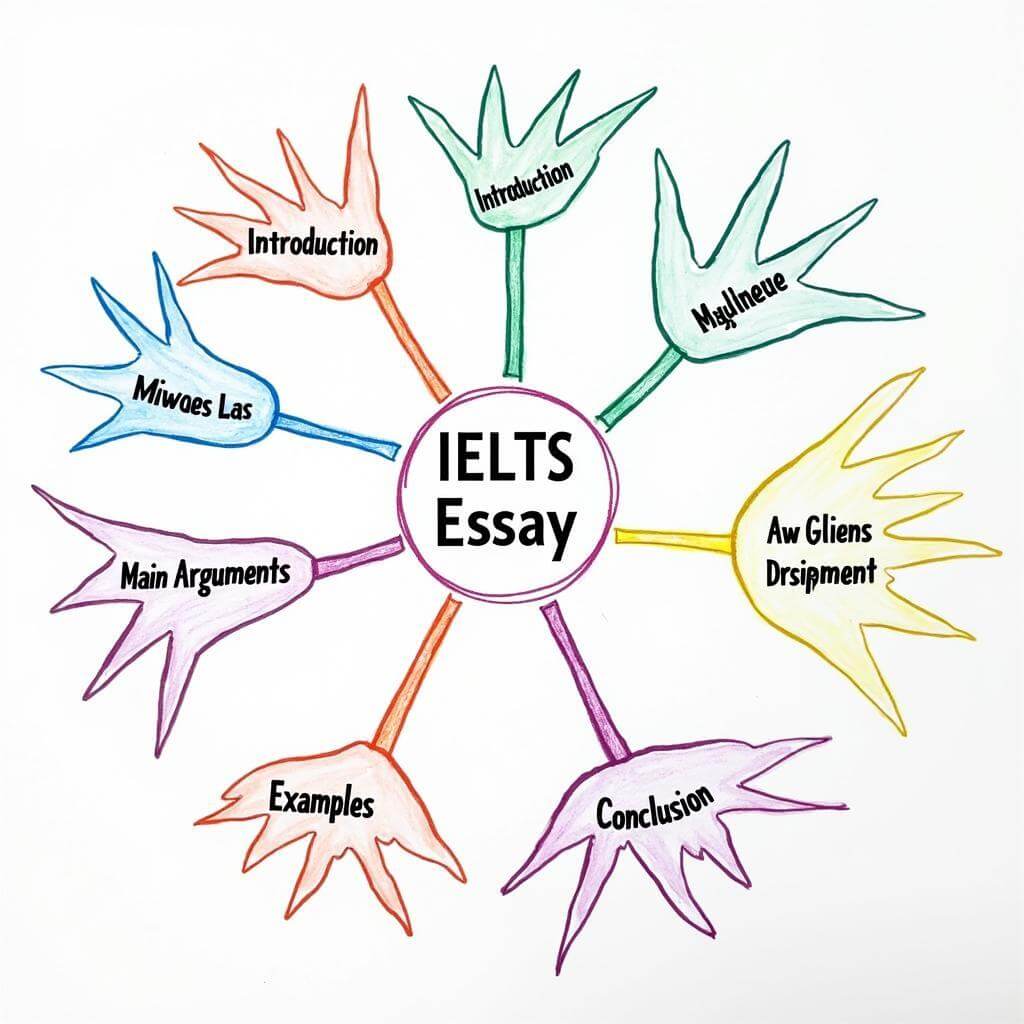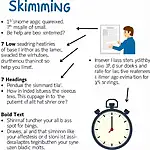Brainstorming is a crucial step in crafting a well-structured and high-scoring IELTS essay. By employing effective brainstorming techniques, you can generate a wealth of ideas, organize your thoughts, and create a compelling argument. This article will explore various strategies to help you brainstorm efficiently for your IELTS essays, ensuring you’re well-prepared for any topic that comes your way.
Understanding the Importance of Brainstorming in IELTS Writing
Before diving into specific techniques, it’s essential to recognize why brainstorming is so vital for IELTS essay writing. Effective brainstorming can:
- Help you generate diverse ideas quickly
- Ensure you have enough content to meet the word count
- Improve the coherence and cohesion of your essay
- Reduce stress during the actual writing process
- Allow you to identify your strongest arguments
By mastering these brainstorming techniques, you’ll be better equipped to develop clear task 2 arguments and boost your overall IELTS writing score.
Key Brainstorming Techniques for IELTS Essays
1. Mind Mapping
Mind mapping is a visual brainstorming technique that can help you quickly generate and organize ideas.
- Write the essay topic in the center of a blank page
- Draw branches from the central topic, each representing a main idea
- Add sub-branches to each main idea for supporting points
- Use keywords, symbols, or colors to enhance connections
This technique is particularly useful for visual learners and can help you see relationships between different ideas at a glance.
 Mind mapping technique for IELTS essay brainstorming
Mind mapping technique for IELTS essay brainstorming
2. Rapid Listing
This straightforward technique involves quickly jotting down all ideas that come to mind without judgment.
- Set a timer for 2-3 minutes
- Write down every idea related to the topic, no matter how irrelevant it may seem
- Don’t worry about organization or quality at this stage
- After the time is up, review and group similar ideas
Rapid listing helps overcome writer’s block and can lead to unexpected connections between ideas.
3. The 5W1H Method
This method involves asking and answering the questions: Who, What, When, Where, Why, and How. It’s particularly effective for developing ideas on common topics.
- Who: Who is affected by this issue? Who are the key stakeholders?
- What: What are the main aspects of the topic? What are the potential solutions?
- When: When did this issue arise? When might it be resolved?
- Where: Where is this problem most prevalent? Where can solutions be implemented?
- Why: Why is this topic important? Why should people care?
- How: How can the issue be addressed? How might different approaches impact the outcome?
This structured approach ensures you consider multiple angles of the essay topic.
4. SWOT Analysis
While typically used in business contexts, a SWOT analysis can be adapted for IELTS essay brainstorming, especially for topics related to policies, proposals, or societal issues.
- Strengths: What are the positive aspects or advantages of the topic?
- Weaknesses: What are the negative aspects or disadvantages?
- Opportunities: What potential benefits or positive outcomes exist?
- Threats: What potential risks or negative consequences should be considered?
This technique helps you create a balanced argument by considering both pros and cons.
5. Freewriting
Freewriting is a stream-of-consciousness technique that can help unlock creativity and overcome mental blocks.
- Set a timer for 5-7 minutes
- Write continuously about the topic without stopping
- Don’t worry about grammar, spelling, or coherence
- After the time is up, review your writing and highlight key ideas
This technique can be particularly helpful when dealing with strategies for complex task 2 topics.
6. The Reverse Brainstorming Technique
This unique approach involves considering the opposite of what you’re trying to achieve.
- Instead of asking “How can we solve this problem?”, ask “How can we make this problem worse?”
- List all the ways to worsen the situation
- Reverse these negative ideas to generate positive solutions
This technique can lead to innovative ideas and help you consider unconventional perspectives.
Refining Your Brainstorming Process
To make the most of these techniques, consider the following tips:
- Practice regularly: The more you brainstorm, the more efficient you’ll become
- Combine methods: Use multiple techniques for a single essay to generate diverse ideas
- Time yourself: Stick to strict time limits to simulate exam conditions
- Review and refine: After brainstorming, take a moment to organize and prioritize your ideas
Remember, the goal is to practice IELTS writing under time constraints, so aim to complete your brainstorming within 5-7 minutes during the actual test.
Applying Brainstorming Techniques to Different Essay Types
Different IELTS essay types may benefit from specific brainstorming approaches:
- For opinion essays, use mind mapping to outline your position and supporting arguments
- For problem-solution essays, combine the 5W1H method with SWOT analysis
- For advantage-disadvantage essays, rapid listing can help generate points for both sides
Adapt these techniques to suit your personal preferences and the specific requirements of each essay type.
Enhancing Fluency Through Topic Practice
Regular brainstorming practice not only improves your idea generation skills but also enhances your overall writing fluency. By improving fluency through topic practice, you’ll be better prepared to tackle any IELTS essay prompt with confidence.
Dr. Emily Thornton, an IELTS expert with over 15 years of experience, emphasizes the importance of brainstorming:
“Effective brainstorming is the foundation of a strong IELTS essay. It’s not just about generating ideas; it’s about training your mind to think critically and creatively under pressure. The few minutes you spend brainstorming can make the difference between a mediocre essay and an outstanding one.”
 IELTS expert emphasizing the importance of brainstorming
IELTS expert emphasizing the importance of brainstorming
Conclusion
Mastering effective brainstorming techniques for IELTS essays is a skill that can significantly improve your writing performance. By incorporating these strategies into your study routine, you’ll be able to generate ideas more quickly, organize your thoughts more effectively, and approach the writing task with greater confidence. Remember to practice regularly and find the techniques that work best for you. With dedication and the right approach, you’ll be well on your way to achieving your desired IELTS score.
FAQ
How long should I spend brainstorming during the IELTS exam?
Aim to spend no more than 5-7 minutes brainstorming. This allows enough time to generate ideas without cutting into your writing time.
Can I use multiple brainstorming techniques for a single essay?
Yes, combining techniques can be very effective. For example, you might start with rapid listing, then organize your ideas using a mind map.
What if I can’t think of any ideas during brainstorming?
If you’re stuck, try the reverse brainstorming technique or the 5W1H method. These structured approaches can help kickstart your thinking process.
Should I write my brainstorming ideas on the official answer sheet?
No, use the separate rough paper provided for brainstorming. Only your final essay should be written on the answer sheet.
How can I improve my brainstorming skills?
Practice regularly with a variety of IELTS essay topics. Time yourself and experiment with different techniques to find what works best for you.
Is it necessary to use all the ideas from my brainstorming session in my essay?
Not at all. Use brainstorming to generate options, then select the strongest and most relevant ideas for your essay.
How detailed should my brainstorming notes be?
Keep your notes brief – use keywords and short phrases rather than full sentences. The goal is to quickly capture ideas, not write a draft.


